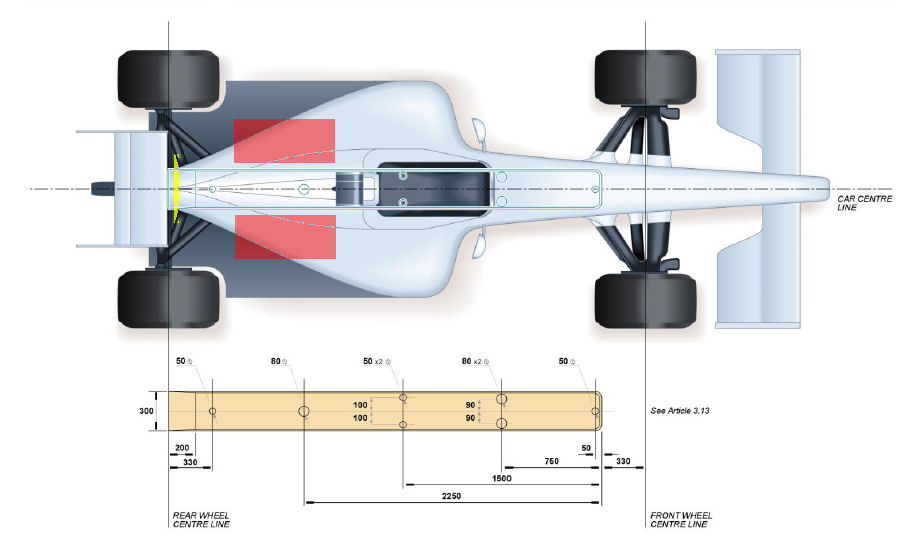WhiteBlue wrote:turbof1 wrote:-Tifosi_dude- wrote:I've been through this thread before and I haven't found this picture anywhere. I think this is what the 2014 cars are supposed to look like.
http://i.imgur.com/VhQJkCS.jpg I found this while browsing Reddit F1
http://www.reddit.com/r/formula1. If I recall correctly, the side deflectors and bargeboards are on the 2014 cars, unlike what is shown in the picture. Also, I believe that the exhaust will actually have one exit, although I'm not entirely certain if that is true or not.
Yes, it will be roughly just like that. Perhaps a little bit bulkier sidepods. Also, they forgot aero wise perhaps the most important thing: the monkey seat right behind the exhaust. That'll add some downforce back to it.
Bargeboards and sidepod-turning vanes will also be kept.
There will be no monkey seat behind the exhaust. The exhaust has to be so far behind the rear axle that nothing else will be behind it except crash protection. Also behind exhaust is a bodywork exclusion zone.
Yes, but the 15cm in the centre is still an exception to the exclusion zone. I do believe teams can exploid that area, although admittingly I could be marginally wrong about it. Here is a reference image (Somers F1):

The latter 150mm of the exhaust has to start in the yellow area (only 20mm in width). I don't know how much freedom teams exactly have concerning the monkey seat, but if they are allowed to pull it a couple of cm's back it would certainly fit. Else it would just do/just not do case.
Also, Somers reported this:
The original 2014 regulations called for a singular exhaust outlet but the 2014 regulations now permit 2:
5.8.2 Engine exhaust systems may incorporate no more than two exits, both of which must be rearward facing tailpipes, through which all exhaust gases must pass.
EDIT: the latest regulations (published today?) effectively state 1 exhaust. Also, 5.8.5 excludes my idea

.
.8.5
There must be no bodywork lying within a right circular cylinder which :
a)
Shares a common axis with that of the last 150mm of the tailpipe.
b)
Has a diameter 30mm greater than the tailpipe.
c)
Starts at the exit of the tailpipe and extends rearwards as far as a point 600mm behind the rear wheel centre line.
they could add some more restrictions to the 'materials' chapter in order to limit costs a bit and they could easily help the heavier drivers with different rules on the 'ballast' chapter... don't they want advanced, fast and efficient F1 cars ?



 I found this while browsing Reddit F1
I found this while browsing Reddit F1 
